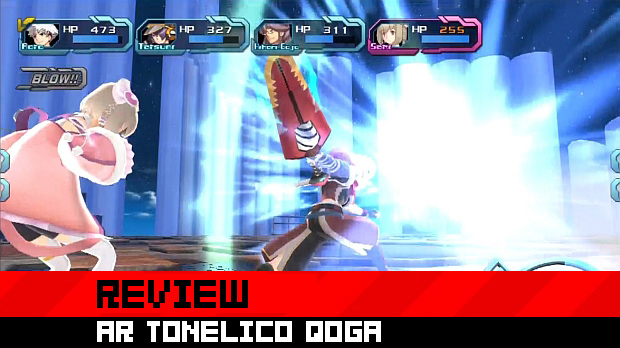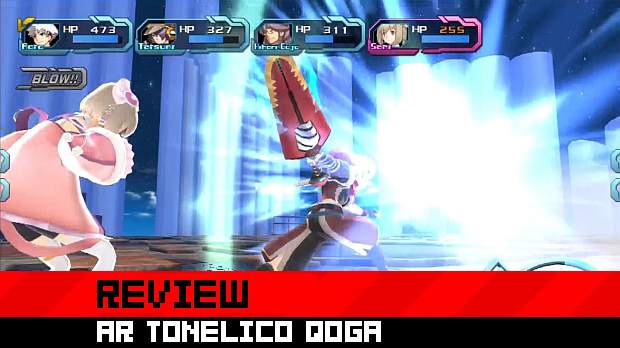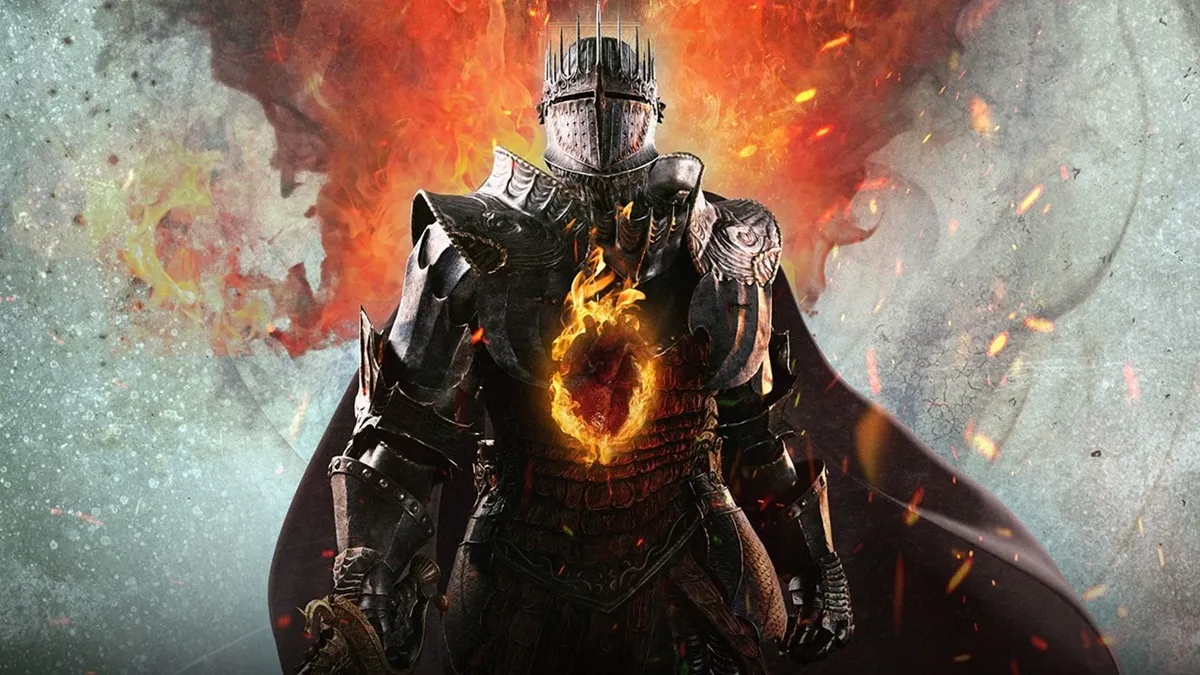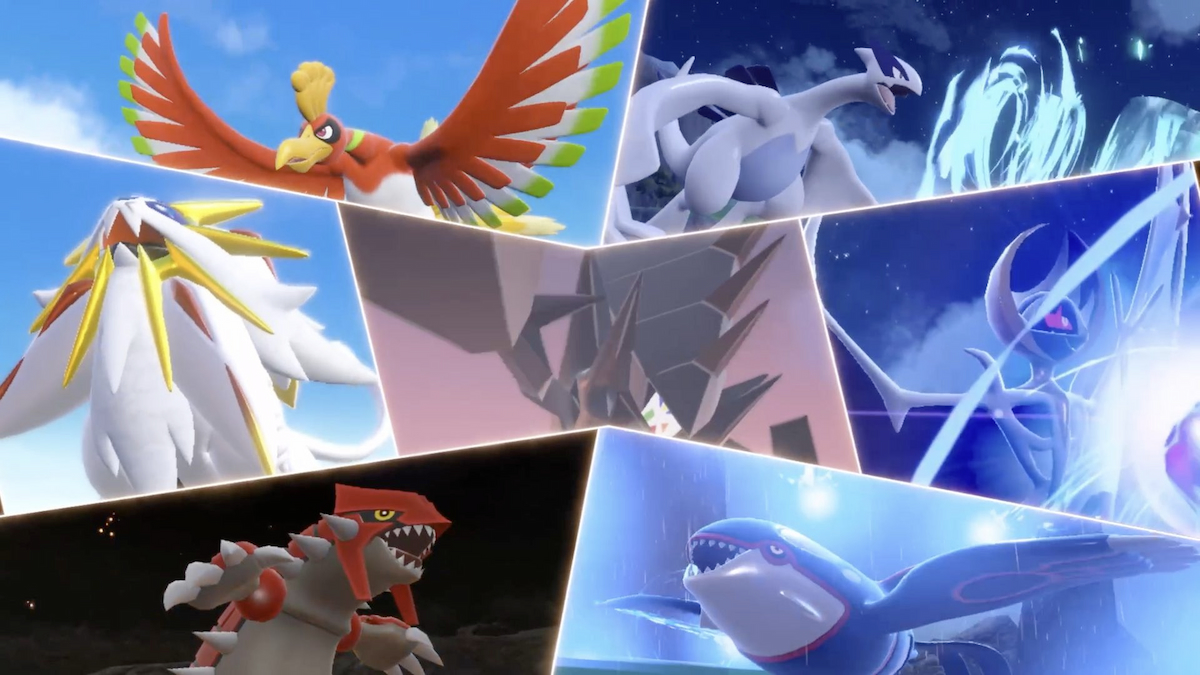Few gamers expected Ar Tonelico III to arrive on North American PlayStation 3s after it was released early last year. The first game’s quirky, thoroughly Japanese atmosphere earned it a cult following, but an embarrassingly bad localization of Ar Tonelico II put not only a stain on NIS America’s reputation, but also a damper on fans’ hopes that the trilogy’s last entry would cross the pond.
Those fears proved unfounded, though, and now the game is here, renamed to Ar Tonelico Qoga: Knell of Ar Ciel. Which now leaves one question to be answered: Is the game any good? Does this swan song make for a fitting finale, or has the Ar Tonelico saga lost the melody forever?
Ar Tonelico Qoga: Knell of Ar Ciel (PlayStation 3)
Developer: Gust
Publisher: NIS America
Released: March 15, 2011
MSRP: $59.99
Upon cursory examination, most observers would conclude that Ar Tonelico Qoga is “just another JRPG”, one that displays the traits that have earned a reputation for stagnation and unoriginality. They’d be half-right, for while the game has adhered to many of the core conventions that have come to define its subgenre, the twists it does bring are substantial and make up for those tropes’ perceived flaws.
Aoto is a lackadaisical carpenter concerned with little beyond catching a nap and avoiding work, until a woman wearing armor appears outside his door, fighting off a group of soldiers. A quick rescue later, the woman – a girl, really – transforms into a different girl, magically sheds her clothes (more on that later), and proceeds to turn her pursuers into giant slices of cake, complete with icing and strawberries on top.
Yep, Ar Tonelico Qoga is that kind of game. Its plot is largely lighthearted, its characters’ surface personalities (more on that later, too) range from “pleasantly cheerful” to “overbearingly cute”, and its visuals back all that up to an almost creepy degree (still more on that later).

The game’s mythos is rich and doesn’t expressly require knowledge of the elder games to understand, though franchise veterans will find plenty to lap up and digest. Digging deeper into the greater lore of the setting, one built up over the course of three games and stored conveniently in an in-game glossary/encyclopedia, reveals a surprisingly grim backstory, enough that the moments when Qoga chooses to take itself seriously can jar and disturb those expecting nothing more than a fun, fluffy romp.
Ar Ciel (the name for Ar Tonelico‘s world), in sharp contrast to its bright color palette, is a post-apocalyptic one, having both its sky and surface rendered uninhabitable by a past, difficult-to-pronounce catastrophe, leaving human civilization clinging to the remains of three Babel-esque power generators.
So far, so familiar. That’s where Ar Tonelico‘s conceptual twist comes in. Ar Ciel is a world literally powered by music and song. Specifically, “Song Magic”, generated by the towers and channeled only by Reyvateils, an artificial race of cute singing girls. Again, yep, Ar Tonelico Qoga is that kind of game.
In contrast to previous games, however, Ar Tonelico Qoga‘s setting puts Reyvateils in a different position. Instead of being rare in one game and dying out in another, Qoga‘s Reyvateils rule the roost, running the oppressive Clustanian empire out of the upper levels of the tower, exterminating entire communities at the slightest hint of defiance.

And it’s not hard to tell why Reyvateils wouldn’t be in some powerful post, for they form the absolute core of Qoga‘s combat system. Just as Ar Ciel’s civilization is controlled by Song Magic, so is its battle.
Qoga‘s encounters involve a single Reyvateil and a party of up to three Vanguards. The Vanguards attack with physical attacks and special moves, while the Reyvateil charges up a Song Magic spell. Foes will attempt to break through the Vanguards’ defense and attack the fragile Reyvateil, and the Vanguards must defend her until she can unleash the spell and vaporize the enemies. Timing attacks to the peaks of an oscillating “Harmograph” speeds up the charging process and enables the Reyvateil to perform a “Purge” (more on that later).
Unlike its predecessors’, Qoga‘s new “R.A.H. System” operates in real-time, with the player controlling one Vanguard at a time (switching freely between them). Many smaller enemies can be dispatched purely through Vanguard attacks, but most bosses and tougher enemies require the kind of firepower only the Reyvateil can call down. That firepower takes many forms, such as an explosive blast from a sunglasses-wearing suicide bomb, or a wide beam cast by a winged fairy with a bag over her head (she insists that it’s “edgy”) wielding a rabbit-headed baton. And again, yep, Ar Tonelico Qoga is that kind of game.
Flashiness aside, the combat is less elegant than in previous outings. Although the game rewards you for finishing fights with Reyvateil magic, most smaller encounters can be ended more efficiently by the Vanguards alone, and many bosses have such a high HP count that players will find their parties simply hacking away at the enemy and chugging health potions while the Reyvateil charges her song.
Then again, there’s an excellent feeling of power that comes with charging a spell to a whopping 150,000% (yes, that’s one-hundred-fifty thousand percent) and killing the final boss in one shot.

That’s not all there is to the game, though, which is where we come to the stuff I delayed talking about. The sexual innuendo stuff. That sort of stuff.
Like its forebears, Qoga is loaded to the brim with double entendres, thinly-disguised innuendo, lecherous misunderstandings, and the sort of content that might make one embarrassed to play the game in public, or in English, where someone might understand the dialog (a Japanese voice-over option is available).
It’s especially prominent considering that Aoto’s most, er, in-depth interactions with his lady Reyvateil friends takes place in the form of “Diving”, a process by which Aoto, er, enters the girls’ subconscious worlds, or “Cosmospheres”. During a Dive, Aoto navigates the girls’ mindscapes, talking to them (a lot), and helping sort out their myriad personal issues in a manner not unlike that of a visual novel (think Sakura Wars, Persona 4, or 999). This has the side effect of powering up their Song Magic spells, as well as unlocking further levels of Purging or new “Personae.”
To Purging, then. It’s a combat action that, once readied, can be triggered by holding down a shoulder button and shaking the controller. What happens, then, is magic. Specifically, the magical dissolution of a layer of the Reyvateil’s clothing. Not only does a Purge accelerate the Song Magic charge, but it adds elemental or status effects to spells and Vanguard strikes. More Purges dissolve more clothing, add more power, and enable fancier attacks. At the highest Purge levels players may find their Vanguards defending a nurse or nun whose modesty is shielded only by the holographic equivalent of a bath towel.
The excuse for this is that Reyvateils can absorb more Song Magic from their surroundings as they expose more skin, but really now. Before crying “sexist” though, know that even male Vanguards must strip to use their best attacks. And they don’t get the benefit of Purging layer-by-layer. It’s all-to-practically-nothing for them.

Despite this apparent descent into raunchiness, it’s been a long while since the Ar Tonelico series first shamed its players, and games in general have grown far more daring in their portrayal of sex and sexual content. Folks seeking titillation would do well to look elsewhere, as Qoga stays strictly in PG-13 territory. The most one would get out of it would be blushing anime girls in their skivvies, or joking shyly about their “first time.”
Thankfully, the cast make themselves more than just a pretty design to dress down. In a smart design decision, Qoga‘s linear story contains few distractions, with side activities carefully constructed to reinforce character development and provide a semblance of customization that alleviates the “JRPG” feeling of narrative restriction.
There are no meaningless fetch quests in Qoga, and the game is fairly generous with cash, experience, crafting resources and Dive Points (needed for Diving and Item Synthesis). And while the game uses a random encounter system, all dungeons contain an “encounter gauge” that depletes as battles are triggered. Once emptied, players are free to explore without interruption until they transition to a new area. Difficulty settings can be adjusted on the fly, though occasional spikes in enemy durability may necessitate a small amount of grinding.
Aoto can converse with the Reyvateils at any save point to deepen his bond with the girls, subsequently enabling him to Dive deeper into their Cosmospheres, exploring their motivations, attitudes, emotions and traumas. Diving also unlocks “Personae”, additional personalities so strong that they can manifest physically, changing the girls’ appearance, combat attributes, background music…and “vital statistics”. The childishly naive Saki might be replaced by the stoic Sakiya Lumei, or the spunky Finnel may give way to the calculatingly efficient Yurisica. By the end of the game players will find themselves attached to the cast, viewing them as more than their initial archetypes.
Even the protagonist (Aoto) gains extra dimensions beyond the typical, “too-nice-for-his-own-good” stereotype, thanks to the mini-cutscenes that come with the crafting of new items or equipment. Those crafting scenes carry some of the funniest material in NIS America’s above-average localization, as well as providing the opportunity to help name the results. The ability to decide whether a healing item should be called “Spunky V” or “Chintzy Powerfill”, or craft a suit of armor called “The Lethal Frills” is something no one can forget.

Strengths in characterization and world-building aside, Qoga‘s other production values leave something to be desired. The game’s visuals clearly reveal that Gust was working on a budget. While colorful and generally smooth-looking, character models and environs are uniformly low-polygon. This is somewhat offset by the fact that most dialog takes place through static 2D-cutouts and town navigation is handled in the classic style of 3D models on 2D maps, but dungeons suffer from bland textures and less-than-useful camera angles.
Where Gust did not skimp, however, is in the music department, which is only appropriate for a game with so much emphasis on the power of song. Each Reyvateil and her various Personae have their own standard combat theme, which is altered when the player triggers a Purge, depending on their equipped “Hyumas” (read: unlockable magic upgrades).
But where soundtrack stands out the most in the game’s various “Hymns”, songs that play during key scenes and boss battles. Each Hymn is a complex composition, with styles ranging from large-scale orchestral arrangements to single-instrument vocals to discordant techno-rock, to a pop melody so saccharine that the cast themselves are disgusted by its sugar-sweetness.
The Hymns often weave together multiple choral tracks with lyrics in both Japanese and “Hymmnos“, a constructed, Ar Tonelico-exclusive language with its own grammar, writing system and vocabulary. Hymmnos supposedly represents the programming code used by Reyvateils to interface with the towers, reinforcing the game’s distinct techno-fantasy setting.
The song lyrics themselves don’t convey much more than the usual sentimentality common in JRPGs and anime, but the fact that Gust went as far as to construct a whole language to do so indicates genuine inspiration. In fact, dedicated fans have made a hobby out of translating Hymns for all to appreciate.
Sadly, little of this is present in the material available to the end user. The soundtrack included with the game contains mostly background music, and the Hymns themselves only play during their designated scenes/battles. Some players may find themselves trying to prolong some battles to hear a particular Hymn in full.
Speaking of prolonging certain battles, Qoga (a Hymmnos word for “End”) has multiple endings. Unfortunately, the only truly satisfying one is the “True” ending, whose conditions are almost totally unmentioned. One of said conditions is finish a certain late-game battle within a fairly short, invisible time limit. It’s highly recommended that players seek out that True ending the first time out, using a walkthrough if need be, and going for the other endings the second time around. An option to skip already-viewed cutscenes makes replaying the game much easier for completionists.

Ar Tonelico Qoga serves as an impressive curtain call for the series, making up for its less-impressive combat and visuals with a cast appealing, well-developed characters, a colorful and well-realized setting, and a hauntingly beautiful soundtrack. Its somewhat leering sensibilities and strongly “anime” aesthetic may not win over some players, and it won’t revolutionize the genre in the eyes of its critics.
That said, anyone who claims to be tired of overly self-serious JRPGs that concentrate on graphics above all else has no reason not to at least give the game a look.





